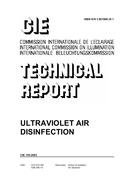Click here to purchase
In the 1870s, using solar radiation as the ultraviolet radiation (UVR) source, studies were initiated to understand the molecular changes in living organisms produced by UVR absorption. In the 20th century, with the invention of electric mercury-vapor arc lamps, a controllable, economical source of germicidal, short wavelength, 253,7 nm UVR became available. Systematic study of UVR impacts on biological systems across several disciplines began, using germicidal UVR lamps. UVR impacts on biological systems have been studied to provide understanding for protection of human beings from hazardous exposure and the capacity of UVR to stem the spread of infectious diseases by inactivating microorganisms in food, water and air. Since global incidents of bioterrorism have escalated from the late 20th century into the 21st, mitigation of biological threats in congregate settings within buildings has taken on further significance for UVR air and surface disinfection and decontamination. Additionally, multi-drug resistant strains of airborne infectious agents have been increasing. Mycobacterium tuberculosis is the most prominent. With 2 billion persons infected and 2 million dying per year, it is the single largest adult killer among infectious diseases. A greater understanding of the potential of UVR air disinfection is needed. This report summarises the present state of knowledge of UVR air disinfection and provides recommendations for future work in research, standardization and testing procedures.
The Report is written in English, with a short summary in French and German. It consists of 69 pages with 33 figures and 3 tables.
Product Details
- Published:
- 01/01/2003
- ISBN(s):
- 9783901906251
- Number of Pages:
- 15
- File Size:
- 1 file , 3.1 MB
